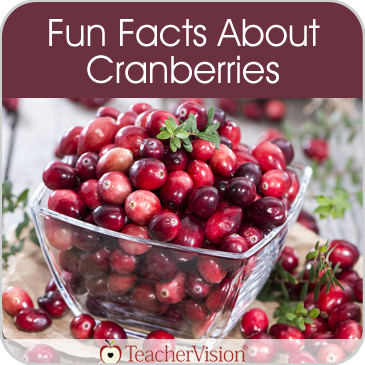 About Cranberries
About Cranberries Cranberries are unlike any other fruit in the world. From Cape Cod to Washington State, the cranberry has played a role in holiday culture and family health & wellness for years. Its unique health benefits and refreshing, tart taste put it in The History of Cranberries Many Uses Origins of the Name The cranberry is one of only a handful of fruits native to North America - the Concord grape and blueberry being the others. Cranberries were widely found in Massachusetts, as documented by the Pilgrims who settled there. Rumor has it that cranberries may have been served at the first Thanksgiving dinner in Plymouth. Recipes using cranberries date back to the 1700s. Documentation proves that the cranberry was grown and harvested in Dennis, Massachusetts (on Cape Cod), in 1816 -- the first recorded yield in cranberry history. Cranberry Fun Facts Did you know that there are 440 cranberries in one pound? 4,400 cranberries in one gallon of juice? 440,000 cranberries in a 100-pound barrel?
Native Americans, long before the Pilgrims arrived in 1620, mixed deer meat and mashed cranberries to make pemmican -- a convenience food that kept for long periods of time. They also believed that cranberries had medicinal value, and were used by medicine men as an ingredient in poultices to draw poison from arrow wounds. Cranberry juice was a natural dye for rugs, blankets and clothing. The Delaware Indians in New Jersey used the cranberry as a symbol of peace.
Cranberries have had a variety of different names since their discovery. Eastern Indians called them "sassamanesh." Cape Cod Pequots and the South Jersey Leni-Lenape tribes named them "ibimi," or bitter berry. The Algonquins of Wisconsin called the fruit "atoqua." But it wasn't until German and Dutch settlers came up with "crane berry," because the vine blossoms resembled the neck, head and bill of a crane, that we arrive at what we know today as the cranberry. ![]()
Used with permission from Ocean Spray Cranberries, Inc.
Copyright ©2000 Ocean Spray Cranberries, Inc. All Rights Reserved.



